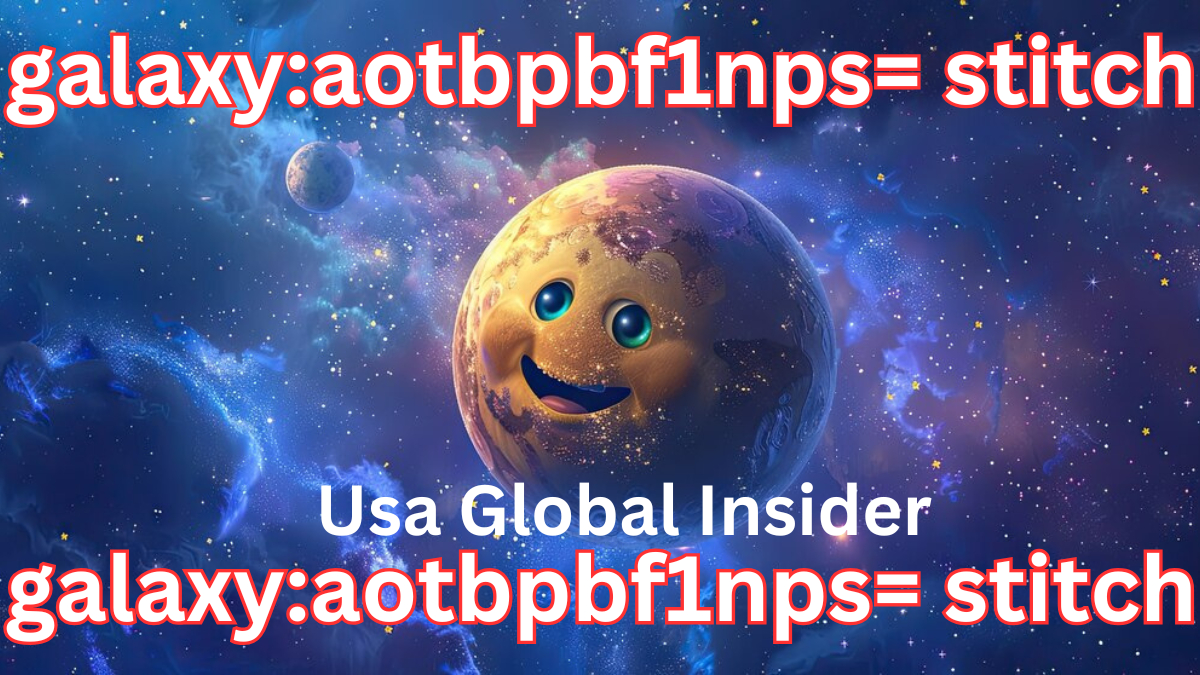Introduction to galaxy:aotbpbf1nps= stitch
The cosmos has always captivated humanity, sparking our curiosity about what lies beyond our blue planet. As technology advances, so does our ability to explore and understand the universe. Among the latest breakthroughs in this ongoing journey is galaxy:aotbpbf1nps= stitch, a game-changing innovation that’s redefining how we capture and perceive space imagery. This technique promises not only stunning visuals but also deeper insights into celestial phenomena. Join us as we delve into how galaxy:aotbpbf1nps= stitch is shifting paradigms in space exploration and opening new avenues for discovery.
The History of Space Exploration and Imaging Technology
Space exploration has a rich history that dates back to the mid-20th century. The launch of Sputnik 1 in 1957 marked humanity’s first step into the cosmos. This monumental event sparked a wave of innovation and competition, known as the Space Race.
As satellites began orbiting Earth, new imaging technologies emerged. From early black-and-white photographs to advanced multispectral sensors, each advancement provided deeper insights into our planet and beyond.
The Hubble Space Telescope revolutionized our view of distant galaxies in 1990, capturing breathtaking images that revealed previously unseen cosmic wonders.
Over time, space agencies worldwide innovated further with high-resolution cameras and spectrometers designed for various missions. These tools not only enhanced our understanding but also laid the groundwork for future explorations—each image telling a story about our universe’s vastness and complexity.
How galaxy:aotbpbf1nps= stitch is Revolutionizing Space Imagery
galaxy:aotbpbf1nps= stitch is setting a new standard in space imagery. By integrating advanced algorithms with high-resolution data, it creates stunning visuals that were previously unimaginable.
This technology stitches together multiple images seamlessly. The result? A cohesive view of celestial bodies and phenomena. Astronomers can now observe details that escape the naked eye.
Moreover, the precision of this imaging technique enhances our understanding of complex structures within galaxies. It unveils intricate formations, such as star clusters and nebulae, allowing researchers to study them in greater depth.
Additionally, the accessibility of these vibrant images sparks interest beyond scientific communities. Enthusiasts and educators alike can engage with space like never before.
As we explore further into the cosmos, galaxy:aotbpbf1nps= stitch transforms not only how we see but also how we comprehend our universe’s vastness. Each image tells a story waiting to be discovered.
Examples of galaxy:aotbpbf1nps= stitch Images and Their Impact
One striking example of galaxy:aotbpbf1nps= stitch technology is the breathtaking panoramic view of the Andromeda Galaxy. Captured in stunning detail, this image reveals intricate star formations and swirling gas clouds that were previously obscured.
Another remarkable instance involves capturing high-resolution images of Mars’ surface. These visuals provide scientists with invaluable insights into the planet’s geology and potential for past life.
The Hubble Space Telescope also utilizes this stitching technique to create composite images that blend various wavelengths of light, revealing phenomena like nebulae in vivid colors.
These images don’t just dazzle; they fuel public interest and inspire future generations to explore the cosmos. Each stitch carries a story, inviting viewers to ponder our place in an ever-expanding universe filled with mysteries waiting to be unraveled.
Potential Applications for galaxy:aotbpbf1nps= stitch in Space Exploration and Research
galaxy:aotbpbf1nps= stitch opens new doors for space exploration. Its advanced imaging capabilities can enhance our understanding of celestial bodies.
Researchers envision using this technology to map the surfaces of distant planets and moons. Such detailed images could reveal geological features previously obscured by distance.
Additionally, galaxy:aotbpbf1nps= stitch allows for real-time monitoring of cosmic phenomena. This includes tracking asteroid movements or observing the birth and death cycles of stars.
Its applications also extend to identifying exoplanets within habitable zones. By analyzing light patterns, scientists can assess their atmospheres more accurately than ever before.
Moreover, collaborative efforts across international space agencies stand to benefit from shared visual data, fostering a global approach to discovery. The potential impact on educational programs is immense too; students might explore interactive models crafted from these stunning visuals.
Criticisms and Controversies Surrounding galaxy:aotbpbf1nps= stitch
As with any groundbreaking technology, galaxy:aotbpbf1nps= stitch has not escaped criticism and controversy. Some experts argue that the method may oversimplify complex data sets, potentially leading to misinterpretation of space imagery. Concerns have been raised about the accuracy of stitched images when it comes to representing intricate structures in space.
Additionally, there are debates surrounding accessibility. While galaxy:aotbpbf1nps= stitch offers impressive visuals for researchers and enthusiasts alike, it can also create a divide between those who have access to advanced imaging technologies and those who do not. This raises questions about equity in scientific exploration.
Moreover, some detractors worry about the potential for misuse of these stunning images. With such powerful visual tools at our disposal, ethical considerations must be taken into account regarding how these images are presented and used in public communications.
The dialogue around galaxy:aotbpbf1nps= stitch is ongoing as scientists navigate both its remarkable benefits and inherent challenges. Balancing innovation with responsible use will be crucial as we continue to explore the vast expanses of our galaxy through this exciting new lens.
